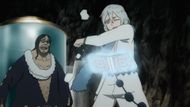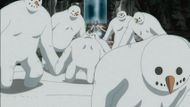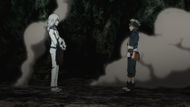When we talk about Black Clover, fans usually think about the main cast. But the beauty of this series is that even side characters are equally memorable, and among the grander arcs of the Clover Kingdom lies a subtle, underrated character named Neige.
Neige in Black Clover is a timid young man with the power of snow and a heart desperate for connection. Despite being visually unassuming in the massive cast of Black Clover, Neige’s aesthetic subtly reflects his internal softness and loneliness.
In this series, his character stands out as he is different from other antagonists. His motivations aren't rooted in greed, power, or conquest. What he wants is painfully simple — friendship. In fact, he yearns for companionship so much that he agrees to assist his older brother Baro in a heinous crime: kidnapping children and draining their mana.
What makes this even more tragic is how Neige doesn't grasp the full horror of his actions at first. When he greets the children he lured using his enchanted snow as his "new friends," he’s genuinely happy. But that happiness is warped and tainted.

Marie Adlai snaps out of the enchantment and confronts him with a reality check. She tells him that true friends don't manipulate and control others. But this truth is too much for him, and he slaps her, his desperation turning to violence in an instant. It’s a pivotal moment that highlights the unstable emotional foundation he’s been standing on.
The dynamic between Neige and Baro is complicated. Baro is domineering, manipulative, and wholly committed to his own greed. Neige, by contrast, is passive, emotionally dependent, and eager to please his older brother. As children, it was Baro who comforted Neige during times of distress, symbolized by the simple act of making him a mud doll.
That one act of kindness was enough to chain Neige emotionally to Baro’s wishes, even when those wishes were criminal. The idea that “Baro is always right” defines Neige’s early arc. But it’s also what makes his eventual break from that mindset so powerful.
Neige’s snow magic: Gentle yet powerful in Black Clover

Neige’s magic reflects his personality — soft, soothing, and visually harmless — yet deceptively effective. He specializes in Snow Magic, which he uses in three distinct forms:
Snow Creation Magic: He creates entities made of snow, notably his “Snow Friends,” which are snow puppets he uses for both combat and company.
Snow Enchantment Magic: He casts wide-area enchantments that lull people (mostly children) into a trance, drawing them to him.
Snow Binding Magic: Neige can shape snow into structures that entrap his enemies, like the spell “Snow Lime Rock.”
Despite his timid demeanor, Neige has considerable mana reserves. He’s capable of blanketing an entire town in snow, and it is no small feat, considering the scale required. While he isn’t as destructive as most Black Clover mages, his magic is potent in more subversive ways.
Battle with Gauche: A turning point in Neige’s life in Black Clover

Neige’s confrontation with Gauche Adlai is short but significant. After Gauche finds his sister Marie injured and imprisoned, he lashes out at Neige in a rage born of panic and protectiveness. Neige tries to defend himself with Snow Cry and his Snow Friends, but Gauche easily counters him with Mirror Magic.
For the first time, Neige is not only physically overwhelmed but emotionally unmoored, asking Baro for help and getting told to “think for yourself.” This line shatters Neige’s fragile psyche. His dependence on his brother is no longer sustainable, and in that emotional vacuum, he begins to reflect on the wrongness of their actions.
Final thoughts
Neige isn’t a flashy villain or a top-tier mage. He’s not part of any royal house, doesn't have a deep legacy, and doesn’t feature in major arcs beyond his debut. But that’s exactly why his story matters. In the world of Black Clover where characters are often fighting for strength, status, or survival, Neige fights for something as simple and as human as companionship. He’s a character who shows that even the most broken can heal — all it takes is someone to believe in them.
